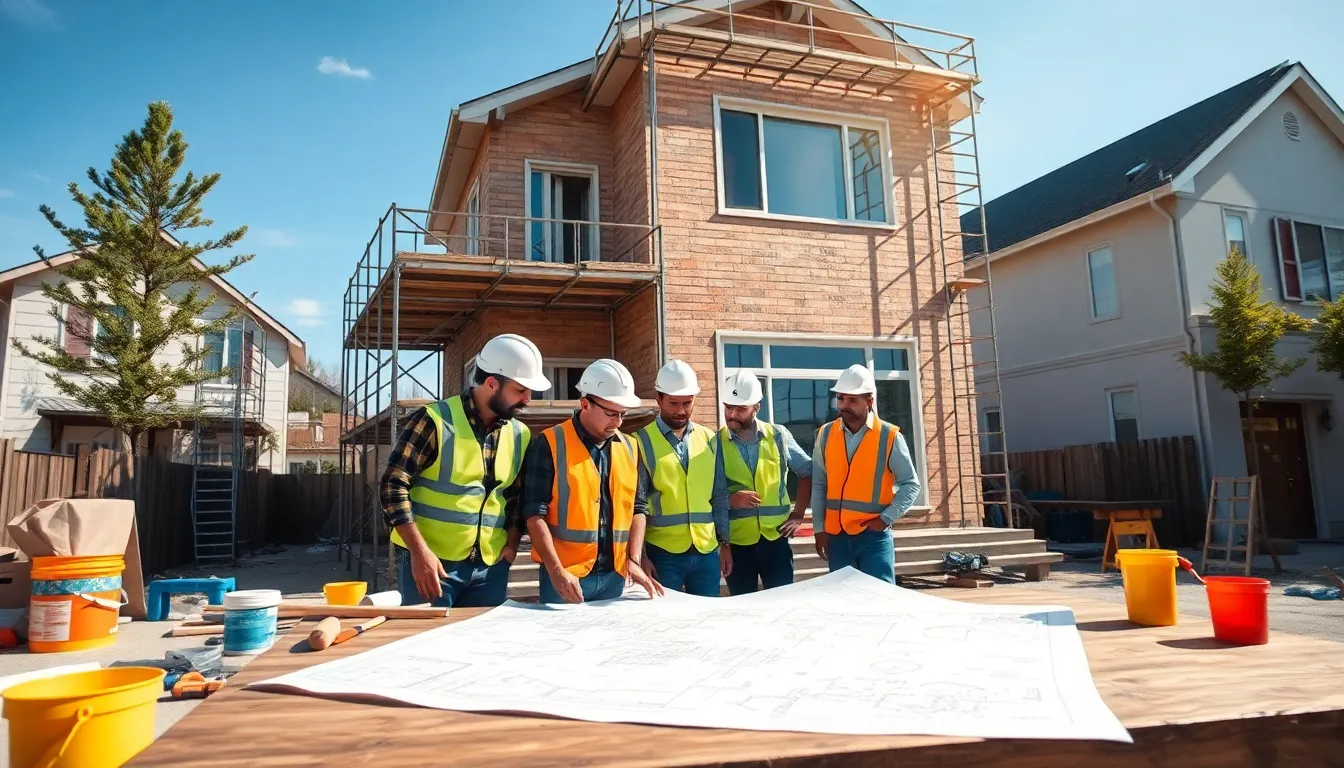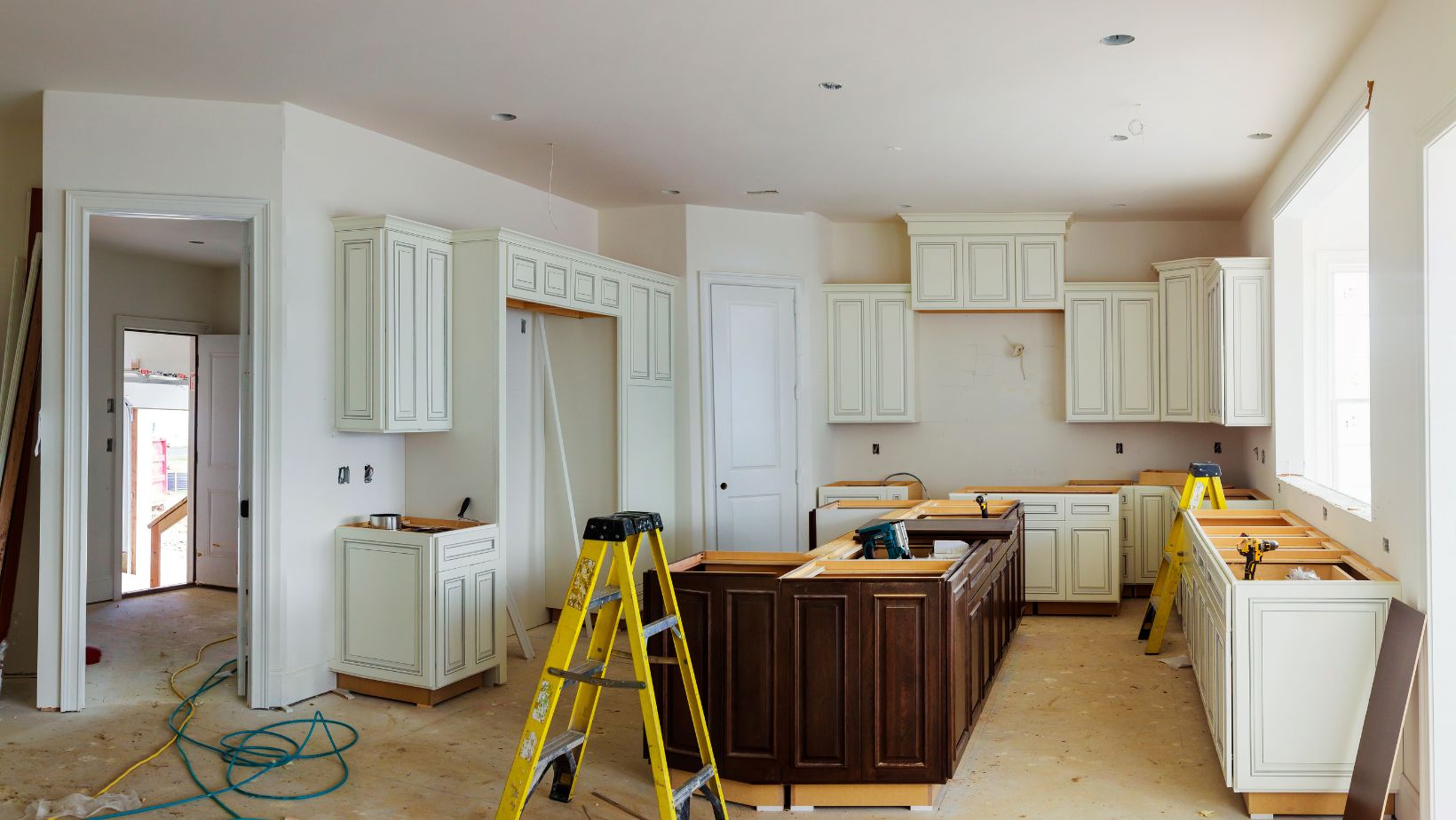A whole house renovation can transform a tired, outdated space into a stunning and functional home. Whether it’s about modernizing an old structure or reimagining the layout to suit contemporary lifestyles, this process offers homeowners a chance to breathe new life into their living environment.
As the demand for personalized spaces grows, many are discovering the benefits of undertaking a complete renovation. From enhancing energy efficiency to increasing property value, a thoughtful renovation can yield significant rewards. This article explores the essential steps, considerations, and tips for anyone looking to embark on the exciting journey of a whole house renovation.
Table of Contents
ToggleWhat Is Whole House Renovation?
Whole house renovation involves comprehensive remodeling of an entire residential structure. This process targets all aspects of a home, including layout, design, energy efficiency, and functionality. Whole house renovations cater to varying homeowner needs, such as accommodating growing families, upgrading outdated features, or enhancing aesthetic appeal.
Key objectives of a whole house renovation often include minimizing maintenance costs, improving energy efficiency, and boosting market value. Energy-efficient upgrades might involve the installation of new windows, enhanced insulation, and updated HVAC systems. Such improvements not only reduce energy consumption but also create a more comfortable living environment.
Whole house renovations typically encompass essential phases: planning, budgeting, designing, and executing the overhaul. Homeowners often collaborate with architects, contractors, and interior designers to achieve their vision. During this process, clear communication of goals and preferences is critical to ensuring satisfactory results.
Ultimately, whole house renovation transforms outdated properties into modern, functional homes tailored to specific lifestyles and preferences.
Benefits of Whole House Renovation

Whole house renovation offers significant advantages for homeowners seeking to modernize their properties. The process not only revitalizes living spaces but also provides opportunities for improved efficiency and increased market value.
Increased Property Value
Increased property value often results from a whole house renovation. Research indicates that a well-executed renovation can yield a return on investment between 70% and 80%. Key updates such as modern kitchens, updated bathrooms, and enhanced curb appeal contribute to attracting potential buyers. Additionally, enhanced features and finishes create a competitive edge in the housing market.
Improved Energy Efficiency
Improved energy efficiency stands as a crucial benefit of whole house renovation. Upgrading insulation, windows, and HVAC systems significantly reduces energy consumption. Homeowners can expect a decrease in utility bills, with energy-efficient upgrades sometimes lowering costs by 20% to 30%. Furthermore, sustainable materials and appliances contribute to lower environmental impact and increased comfort.
Enhanced Living Space
Enhanced living space results from reconfiguring layouts and optimizing functionality. Whole house renovations allow for better utilization of square footage, creating open-concept areas that promote flow and accessibility. Design elements, such as additional bedrooms, home offices, or multifunctional rooms, cater to evolving lifestyle needs. As a result, homeowners achieve a more comfortable and personalized living environment that aligns with their preferences.
Planning Your Whole House Renovation
Effective planning is crucial for successful whole house renovations. Careful consideration of budget, timeline, and professionals ensures a smoother process and better results.
Setting a Budget
Establishing a budget requires thorough assessment of finances. Homeowners should account for materials, labor, permits, and contingency funds of at least 10% to 20%. Reviewing similar projects in the area provides insight into realistic costs. Prioritizing renovations helps allocate funds effectively, focusing on high-impact areas like kitchens or bathrooms to maximize value. A detailed budget will prevent overspending and ensure the project remains financially viable.
Creating a Timeline
Developing a timeline involves outlining each phase of the renovation process. Homeowners should factor in design, permits, procurement, and construction stages. Setting realistic completion dates for each phase aids in managing expectations. Incorporating buffer time accounts for potential delays, such as material shortages or weather issues. Communication with all parties involved promotes adherence to the timeline and enhances overall efficiency.
Choosing the Right Professionals
Selecting qualified professionals significantly impacts the renovation outcome. Homeowners should prioritize licensed contractors and architects with proven experience in whole house renovations. Seeking referrals from trusted sources or checking online reviews helps identify reputable candidates. Scheduling consultations enables direct assessments of skills and compatibility. Ensuring clear communication and a shared vision with professionals fosters collaboration and leads to successful project execution.
Design Considerations
Design plays a pivotal role in the success of a whole house renovation. Thoughtful choices in style and layout significantly enhance living spaces, creating environments that reflect personal preferences and meet practical needs.
Modern vs. Traditional Styles
Modern styles emphasize clean lines, open spaces, and minimalistic aesthetics. Features may include large windows, neutral color palettes, and sustainable materials. Traditional styles, in contrast, highlight intricate details, rich colors, and classic furnishings. Elements like crown molding and patterned wallpaper can enhance the visual interest in these designs. Homeowners should align their design choices with their lifestyle, considering factors like maintenance, durability, and aesthetic preferences to create a cohesive and inviting atmosphere throughout the home.
Functional Layouts
Functional layouts ensure that living spaces operate efficiently, addressing everyday needs. Key considerations include maximizing natural light, promoting flow between rooms, and accommodating various activities. Open-concept designs often facilitate interaction and flexibility, while defined spaces can enhance privacy and focus. The arrangement of furniture and features should prioritize accessibility and comfort. Incorporating multifunctional spaces, such as a home office that doubles as a guest room, aligns with modern lifestyle demands, allowing homeowners to adapt to changing needs over time.
Managing the Renovation Process
Managing the renovation process involves careful coordination, effective communication, and preparedness for challenges. Homeowners must stay engaged throughout the project to ensure successful outcomes.
Communication with Contractors
Communication with contractors plays a vital role in the renovation process. Establishing clear lines of communication ensures that all parties understand expectations, timelines, and budgets. Homeowners should:
- Schedule regular check-ins. Regular updates help track progress and address concerns promptly.
- Use detailed project briefs. Clearly outline project goals, specifications, and timelines to minimize misunderstandings.
- Encourage questions. Contractors must feel comfortable asking for clarification, which prevents costly errors.
- Utilize various communication tools. Emails, phone calls, and project management software provide flexible options for sharing information.
Strong communication promotes collaboration and aligns goals, leading to a smoother renovation experience.
Handling Unexpected Challenges
Handling unexpected challenges requires flexibility and problem-solving skills. Homeowners should anticipate issues and employ strategies to navigate them effectively. Key points include:
- Establishing contingency plans. Setting aside 10% to 20% of the budget for unforeseen costs ensures financial readiness.
- Maintaining a positive mindset. Approach challenges as opportunities for improvement rather than setbacks.
- Consulting professionals promptly. Engaging architects, engineers, or contractors quickly can provide solutions for unexpected setbacks.
- Documenting changes. Keeping records of all modifications helps manage changes and ensures compliance with design goals.
Proactive approaches to challenges enhance project resilience and facilitate successful renovations.
Whole house renovation offers homeowners an incredible opportunity to create personalized living spaces that reflect their unique lifestyles. By focusing on energy efficiency and modern design, homeowners can significantly enhance both comfort and functionality.
With careful planning and collaboration with qualified professionals, the renovation process can be streamlined and effective. Embracing flexibility and maintaining open communication throughout the project are essential for overcoming challenges and achieving desired outcomes.
Ultimately, a well-executed renovation not only revitalizes a home but also boosts its market value, making it a worthwhile investment for the future.







